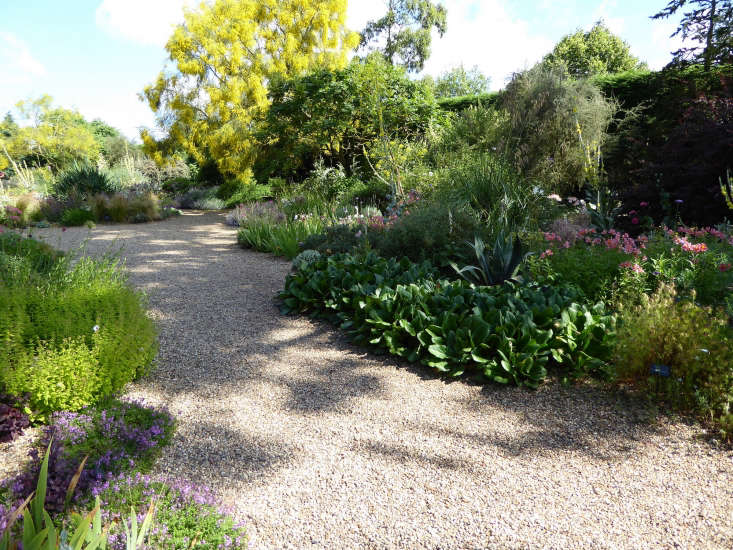Bergenia, Bergenia: “Elephant’s Ears”
The nickname is apt: large, leathery, light-suppressing “ears” flop over other forms of life, making this an effective evergreen groundcover. Its virtues have been debated by two of the UK’s best-known gardeners: Christopher Lloyd called it “wretched” while Beth Chatto has made no secret of her appreciation for bergenia. In fact it was their disagreement over this flower arranger’s favorite that marked the beginning of a beautiful friendship.
Photography by Britt Willoughby Dyer, except where noted.

Bergenia’s natural habitat is a free-draining, rocky landscape, at the edge of woodland. It hails from the mountains of central Asia, and does not respond to cosseting in a garden of heavy soil. Appreciated by winter gardeners for its fiery foliage, the leaf color in popular varieties such as B. cordifolia ‘Purpurea’ is enhanced in poor soil.

As the leaves reach the end of their winter endurance they can look raggedy, but as Beth Chatto points out, this is soon overtaken in April by masses of long-stalked, often intensely colored flowers. In autumn and winter the reddening foliage comes into its own, “all polished bright as shoe leather.”

Elephant’s ears are known as much for their structural, evergreen leaves as their flowers. Another opinionated gardener, the late David Hicks, grew bergenias close to his house in Oxfordshire. Though he eschewed pink varieties for white, the flowers were not allowed to show themselves. Instead, he cut them off every spring.

In her seminal book The Gravel Garden, Chatto devotes a section to “A Passion for Bergenias.” She is very persuasive: in dry conditions, they provide contrast to other hard workers such as euphorbia, lamb’s ears, and sedum. They accentuate the curve of a border; planted in repeated groups, they act as punctuation.
Cheat Sheet
• This fuss-free plant has the benefit of being unattractive to deer and rabbits. Bergenia is unperturbed by salty air. Older varieties have given it a reputation for harboring slugs; choose from newer, neater forms.
• For jewel-like flowers and dark leafed autumn color, there are several to choose from, including ‘Bressingham Ruby’, ‘Abendglocken’, and compact ‘Pink Dragonfly’.
• Recommended whites with evergreen foliage: ‘Beethoven’, ‘Silberlicht’. The popular ‘Bressingham White’ is only semi-evergreen.

Keep It Alive
• Bergenias spread through rhizomes, and can be divided in spring or fall. Old leaves attract slugs and do not enhance the look of the plant; remove them as new leaves appear in summer.
• Good drainage is more important than levels of moisture and light, though most varieties will flower better in sun.
• Bergenia cordifolia is reliably hardy (in USDA zones 4-7), while some hardy varieties may take longer to recover from the effects of frost.







Have a Question or Comment About This Post?
Join the conversation